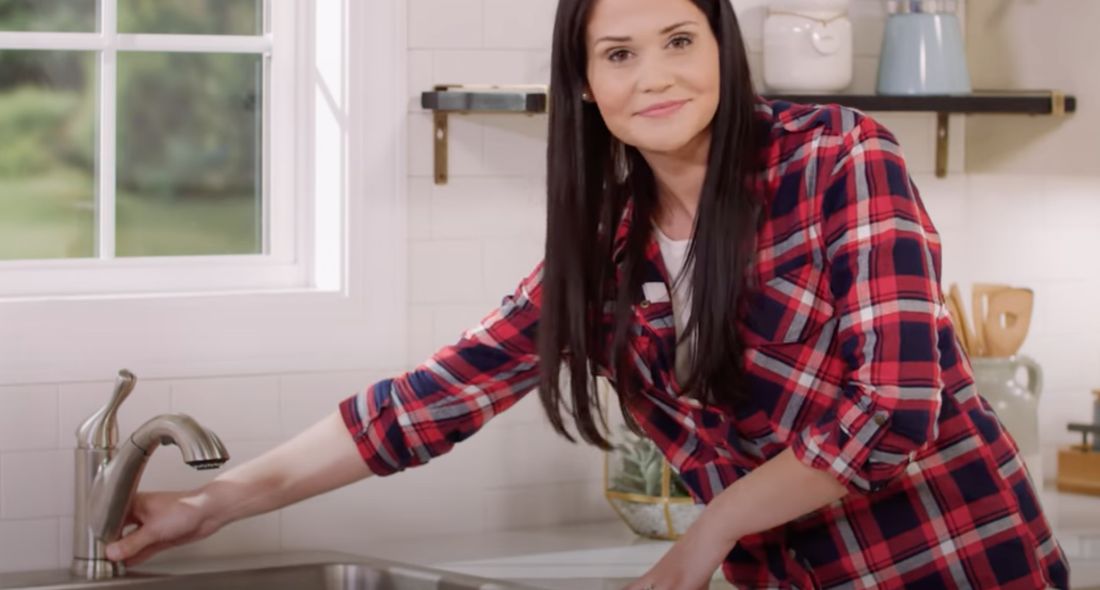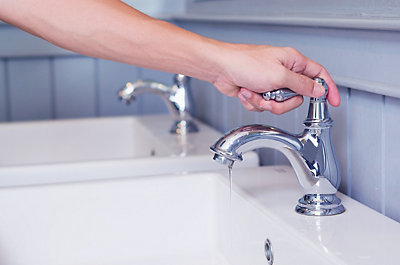The Significance of Fixing a Dripping Faucet
The Significance of Fixing a Dripping Faucet
Blog Article
What're your insights and beliefs on Water Dripping from Faucet: Why and How to Fix?

Leaking taps might appear like a minor hassle, yet their impact surpasses just the nuisance of the audio. From wasting water to incurring unneeded economic prices and health dangers, neglecting a trickling tap can bring about various repercussions. In this write-up, we'll delve into why it's important to resolve this usual house concern without delay and effectively.
Wastefulness of Water
Ecological Influence
Trickling taps contribute considerably to water waste. According to the Epa (EPA), a single faucet trickling at one drip per secondly can lose more than 3,000 gallons of water per year. This not just stress water resources yet additionally impacts communities and wild animals dependent on them.
Financial Prices
Enhanced Water Bills
Past the environmental influence, dripping taps can inflate water costs significantly. The accumulated waste in time converts into greater utility costs, which can have been prevented with prompt repairs.
Prospective Residential Or Commercial Property Damages
Moreover, extended dripping can result in harm to components and surface areas surrounding the faucet. Water build-up can trigger discoloration, deterioration, and even structural problems if left ignored, causing additional repair costs.
Health and wellness Worries
Mold And Mildew and Mold Growth
The continuous existence of wetness from a leaking faucet develops an excellent setting for mold and mildew and mold growth. These fungi not only endanger interior air high quality however also pose wellness dangers, especially for people with breathing conditions or allergic reactions.
Waterborne Illness
Stagnant water in trickling faucets can become a breeding place for germs and various other microorganisms, increasing the risk of waterborne diseases. Impurities such as Legionella germs thrive in stationary water, potentially causing major ailments when ingested or breathed in.
DIY vs. Specialist Repair work
Pros and Cons of Do It Yourself Repair
While some may try to deal with a leaking tap themselves, do it yourself repairs feature their own set of obstacles. Without correct knowledge and tools, DIY efforts can worsen the concern or lead to incomplete repair work, extending the issue.
Benefits of Employing an Expert Plumber
Employing an expert plumber makes sure that the underlying cause of the dripping tap is resolved properly. Plumbers have the experience and tools to identify and repair faucet concerns effectively, saving time and minimizing the threat of additional damages.
Step-by-Step Guide to Fixing a Dripping Tap
Tools Called for
Prior to attempting to deal with a leaking tap, gather the necessary devices, including a flexible wrench, screwdrivers, replacement components (such as washers or cartridges), and plumber's tape.
Usual Faucet Issues and Their Solutions
Recognize the type of tap and the specific problem creating the drip. Common troubles include worn-out washing machines, rusty valve seats, or damaged O-rings. Refer to maker guidelines or online tutorials for step-by-step support on fixings.
Preventive Measures
Routine Maintenance Tips
To avoid trickling taps, carry out routine upkeep such as cleaning up aerators, evaluating for leakages, and changing damaged components without delay. In addition, consider installing water-saving devices or updating to extra efficient fixtures.
Importance of Prompt Fixes
Resolving leaking taps as quickly as they're discovered avoids further water wastage and possible damages, ultimately conserving both water and cash in the long run.
Impact on Residential Or Commercial Property Value
Assumption of Well-Maintained Home
Maintaining a property in good condition, consisting of addressing upkeep issues like leaking taps, improves its viewed worth and desirability amongst possible buyers or occupants.
Influence on Resale Value
Features with well-maintained plumbing components, consisting of faucets, command higher resale values in the realty market. Resolving dripping faucets can contribute to a favorable impact throughout property evaluations and settlements.
Environmental Responsibility
Individual Contribution to Conservation
Taking responsibility for fixing dripping taps straightens with more comprehensive initiatives towards water preservation and environmental sustainability. Every individual's actions jointly make a substantial influence on maintaining valuable resources.
Sustainable Living Practices
By focusing on punctual repair work and adopting water-saving habits, people contribute to lasting living methods that benefit both existing and future generations.
Final thought
Addressing a dripping tap exceeds mere comfort; it's an important action toward preserving water, decreasing economic costs, and securing health and building. Whether through do it yourself fixings or professional assistance, acting to deal with dripping faucets is a tiny yet impactful means to promote responsible stewardship of resources and add to a much healthier, more sustainable future.
How to Fix a Leaky Faucet: Step-by-Step Repair Guide
A leaky faucet may seem like a simple annoyance, but if it's not fixed promptly, that leak could cost hundreds to potentially thousands. From water damage to mold, mildew, and high water bills, even a tiny leak can be catastrophic if left unattended. Damage like this can even affect the overall value of your home, so it's important to take the right approach for leaky faucet repair. You may need the help of a plumber in some cases, but we've got a few tips you can try on how to fix a leaky faucet before calling the pros.
Four Faucet Types
When you're learning how to fix a leaky faucet, the first step is knowing what kind of faucet you're working with! There are four common types.
Cartridge Faucets
Cartridge faucets come in one- or two-handled varieties. In one-handled cartridge faucets, hot and cold water combines in a single cartridge. In the two-handled versions, hot and cold water are controlled separately and mixed in the faucet.
Ball Faucets
Ball faucets have a single lever you push up and down to adjust the pressure and rotate to change the temperature. A slotted metal ball controls the amount of water allowed into the spout.
Compression Washer Faucets
They're the oldest type of faucet, but they're still used in many homes — especially older ones. Compression faucets have two separate handles that, when turned, raise or lower the washer that seals a water valve. This valve stops water from flowing through the faucet when it is turned off.
Disc Faucets
Disc faucets rarely need to be repaired due to their maintenance-free design. The water flow is controlled by two discs — the upper one raises and lowers against a fixed lower disc, creating a watertight seal. If your disc faucet starts leaking, you may need to replace the seals or clean residue buildup from the inlets.
Fixing a Leaky Faucet
Step 1: Turn Off the Water
Whether you're learning how to fix a leaky bathtub faucet or how to fix a leaky kitchen faucet, always turn off the water supply to your working area when you're fixing a leak. The last thing you want is a flood added to your list of things to fix.
Look for the shutoff valves below your sink or around the tub and turn them clockwise to stop the water flow. If your faucet doesn't have shutoff valves, you may need to turn off the water for the whole house. Check to make sure it's off by turning the faucet on. If nothing comes out, you're ready to start the repair.
Step 2: Take Apart the Faucet
How you disassemble your faucet depends on the type of fixture you have. You can use a flathead screwdriver to remove the caps on top of the handle or handles for cartridge and compression faucets. Inside, you should see handle screws. Unscrew these with a screwdriver to remove the handle.
Disc- and ball-style faucets will typically have an inlet screw near the handle, and removing that will reveal the interior of the faucet.
Detach the Valve Stem
For cartridge- and compression-style faucets, you'll see the inner valve stem or cartridge once you remove the faucet handles. If you have a compression faucet, unscrew the brass valve stem. If you have a cartridge faucet, pull out the cartridge. If your cartridge has been in place for a while, it may require some tools or extra force to remove it due to mineral deposits.
Examine and Replace Parts
Once you've removed the parts, check them out to confirm what needs to be replaced. You may see corroded rubber washers, O-rings, stems, or cartridges. On a ball-style faucet, check the seats and springs for damage.
If you need to repair a leaky disc faucet, check the inlet and seals on the lower disc.
Once you determine what parts must be replaced, visit your local hardware store. Bring the damaged parts with you to ensure you can purchase the correct components to replace them.
Clean Valves and Faucet Cavity
If you've removed a stem or cartridge, you may notice mineral buildup in the faucet's threads. Use white vinegar to clean the valve seat by soaking it for a few minutes, then scrub it away with a soft toothbrush and rinse with warm water. You can also clean the interior of the faucet in the same way.
Reassemble the Faucet
Once your faucet is cleaned and the required parts have been replaced, it's time to reassemble it. Put the pieces back together and slowly turn the water supply back on. Doing this slowly is crucial because too much initial water pressure can damage the new hardware you've just installed.
https://homewarranty.firstam.com/blog/how-to-fix-leaky-faucet

I came across that article about Water Dripping from Faucet: Why and How to Fix while surfing around the internet. Are you aware of somebody else who is interested in Why Are My Faucets Dripping (And Can I Fix It Myself)?? Please feel free to share it. We recognize the value of your readership.
Report this page